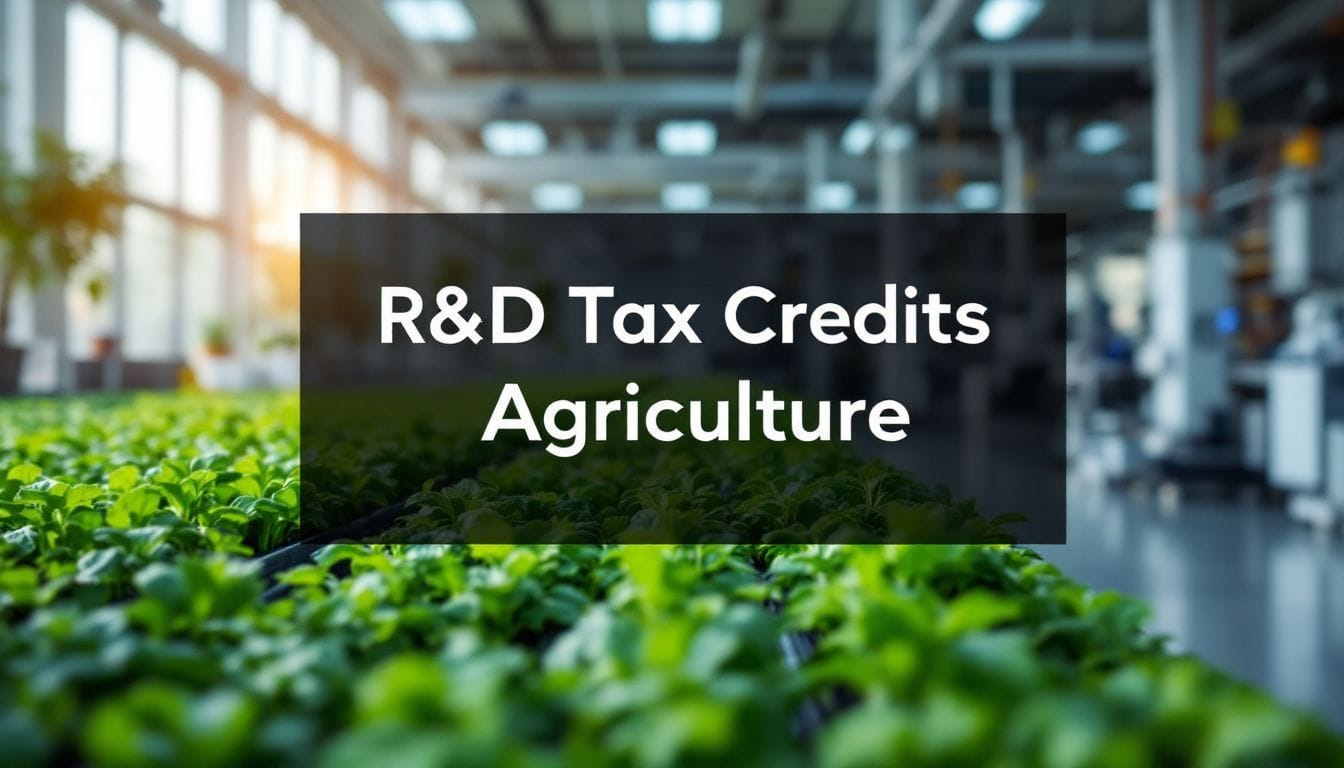R&D Tax Credits Agriculture
Farming is tough. You’re always looking for ways to cut costs and boost profits. But did you know that your innovative work could earn you money back? Enter R&D tax credits in agriculture.
Here’s a fact: UK farmers claimed £105 million in R&D tax credits in 2021. This article will show you how to tap into this funding. You’ll learn which farming activities qualify and how to apply.
Ready to grow your bottom line?
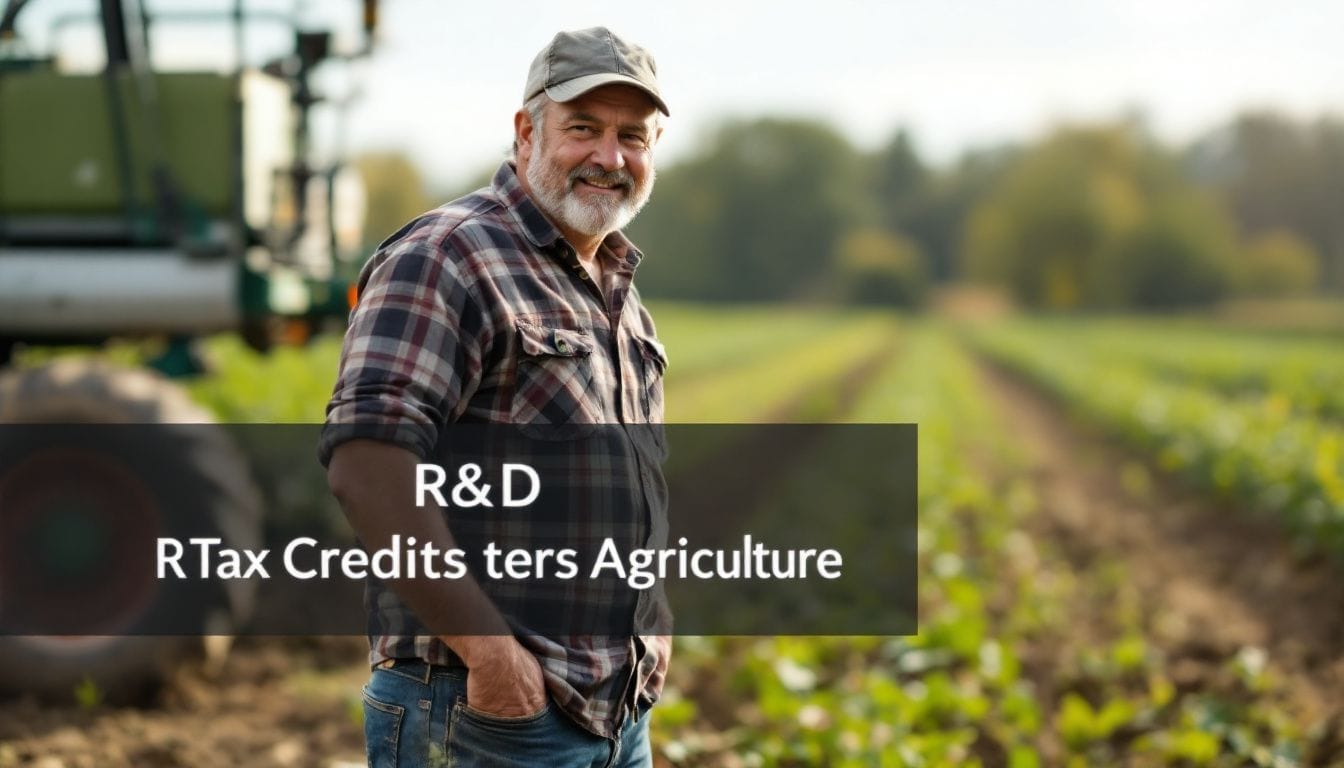
What Are R&D Tax Credits in Agriculture?
R&D tax credits in agriculture are cash rewards for farmers who try new things. You can get money back for testing fresh ideas in farming, like new crop types or clever machines.
Definition and Purpose
Tax credits for research help UK firms that do new things. They want to make science and tech better in the country. These credits give money back to firms that spend on research work.
You can ask for these credits if your firm tries to fix tech problems. The UK started this plan in 2000 to make more new ideas happen. It gives money to firms that take risks to make new items or make old ones better.
The goal is clear: to make the UK the best at science and tech. By giving tax help, the UK wants firms to spend more on research. This leads to new finds, better items, and a stronger money system.
Eligibility Criteria for Agricultural Businesses
Farms and agribusinesses can receive tax relief for their research work. To qualify, you must be a UK company that pays corporation tax.
- Your farm must be innovating
- You need to be addressing agricultural challenges creatively
- Your work should aim to improve farming practices
- Projects can focus on crops, livestock, or novel farming methods
- You must invest in this research work
- You have a two-year window to claim the tax relief
- You can still claim if your project is unsuccessful
- Farm partnerships are not eligible for this tax relief
- The claim process varies depending on your company size
- You must maintain thorough records of your work and expenses
This applies to UK companies only. If you think you might be eligible, it’s worth investigating further.
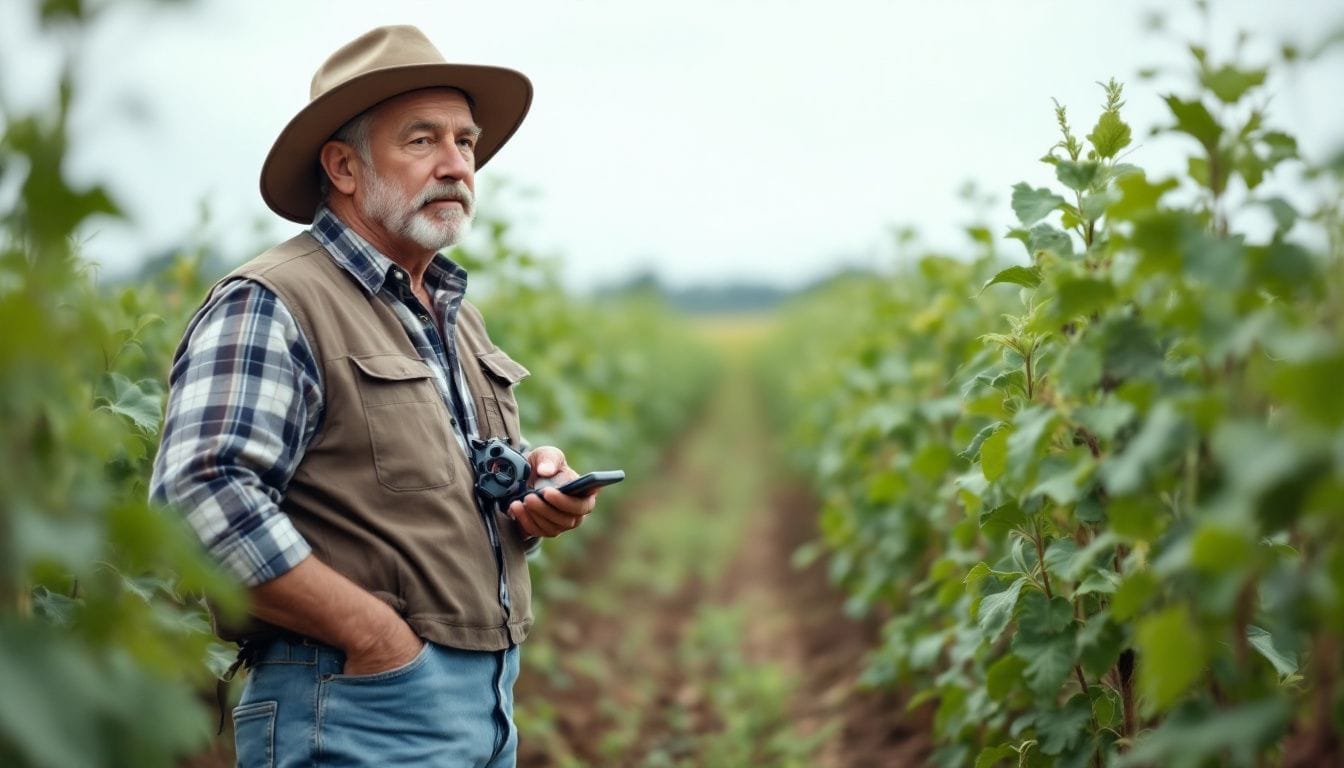
How Do R&D Tax Credits Benefit the Agricultural Sector?
R&D tax credits can boost your farm’s finances. They help you try new things and stay ahead in farming.
Financial Advantages for Farmers and Agribusinesses
Farm cash and profits can grow with tax credits for research. These credits help pay for new ways to farm and new tools. UK farms get about £49,000 back each year on average. This extra money lets you buy better gear and seeds.
You can grow more food or raise healthier animals with these funds. The credits also lower your tax bill, so you keep more money.
Only 1 in 100 claims for these credits come from farms. This means many farms miss out on big savings. You could use this money to buy new tractors or try green pest control. It’s a chance to make your farm stronger and do better than others.
Don’t miss out on this chance – see if you can get these credits today.
Impact on Agricultural Innovation and Competitiveness
Tax credits for research boost farm growth and success. They help farmers pay for new ideas and tools. This aid lets farms try risky projects they couldn’t afford before.
With these credits, farms can grow better crops and raise better animals. They can also make farming kinder to nature. These steps help UK farms compete with others around the world.
Farms that use these credits often grow more food and spend less money.
The credits push farms and scientists to work together. This leads to more new ideas in farming. As a result, all UK farms become stronger and work better.
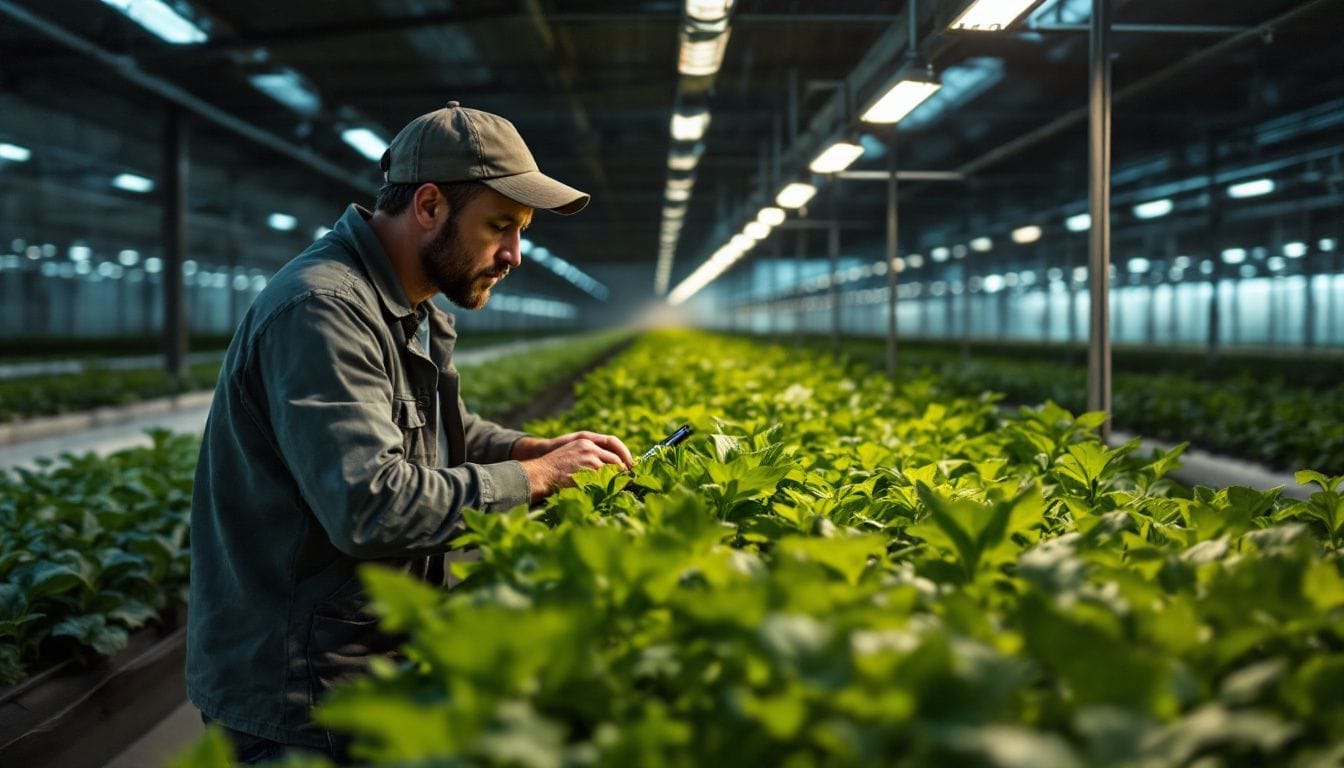
Which Agricultural Activities Qualify for R&D Tax Credits?
You can claim R&D tax credits for many farming tasks. These include making new crops, breeding better animals, and using green farming methods.
Crop Development and Improvement
British farmers can get tax relief for crop work. They try new plants and make soil better to grow more food. This work often gets tax help. In 2018, not many UK farmers asked for this money.
They missed out on savings.
New tech helps farms grow better crops. Drones let farmers check fields fast and find problems. Using tech like this can lead to bigger harvests. It may also get tax help. UK farmers who try new ways to grow more food could save money on taxes.
Livestock Breeding and Genetics
Breeding farm animals and studying their genes can lead to big tax breaks. You can ask for money back when you try new ways to breed healthier, more useful animals. Work to cut down on drugs for farm animals also counts.
These efforts push science and tech forward in animal genes. Your farm could get tax help for such clever work.
Tax breaks reward your push to make farm animals better. The tax office sees value in your work to improve animal genes. This means more money back for your hard work. You’re not just raising animals – you’re moving science ahead.
That’s worth a lot to the tax man.
Sustainable Farming Practices
Eco-friendly farming makes your farm healthier and more profitable. These methods guard your soil, save water, and cut down on nasty chemicals. You can use crop rotation, cover crops, and natural ways to fight pests.
These tricks help your land stay strong for years to come.
Tax credits back your shift to green farming. You can claim for testing new earth-friendly methods on your farm. This includes trying out no-till farming or smart farming tools. The government supports these efforts to fight climate change and soil loss.
Your work helps create a better future for British food and land.
Agricultural Technology and Machinery
Farm tech and machines help grow more food. Smart tractors, drones, and AI tools let farmers work better. These tools save money and grow more crops. For example, GPS tractors use 10% less fuel.
Drones check fields and find crop problems fast.
Tax credits help farm tech grow. The average claim in farm tech R&D is £43,000. This money helps farms try new gear and ways to work. It pays for things like new water systems or robot milkers.
You can claim for staff time, stuff you use, and some outside help.
UK farms use tech to solve big issues. Climate change and more food needs push new ideas. New machines save water and use fewer chemicals. Farms that grow up instead of out make more food in less space.
These new ideas can get tax relief. They show how farms fix real problems with tech.
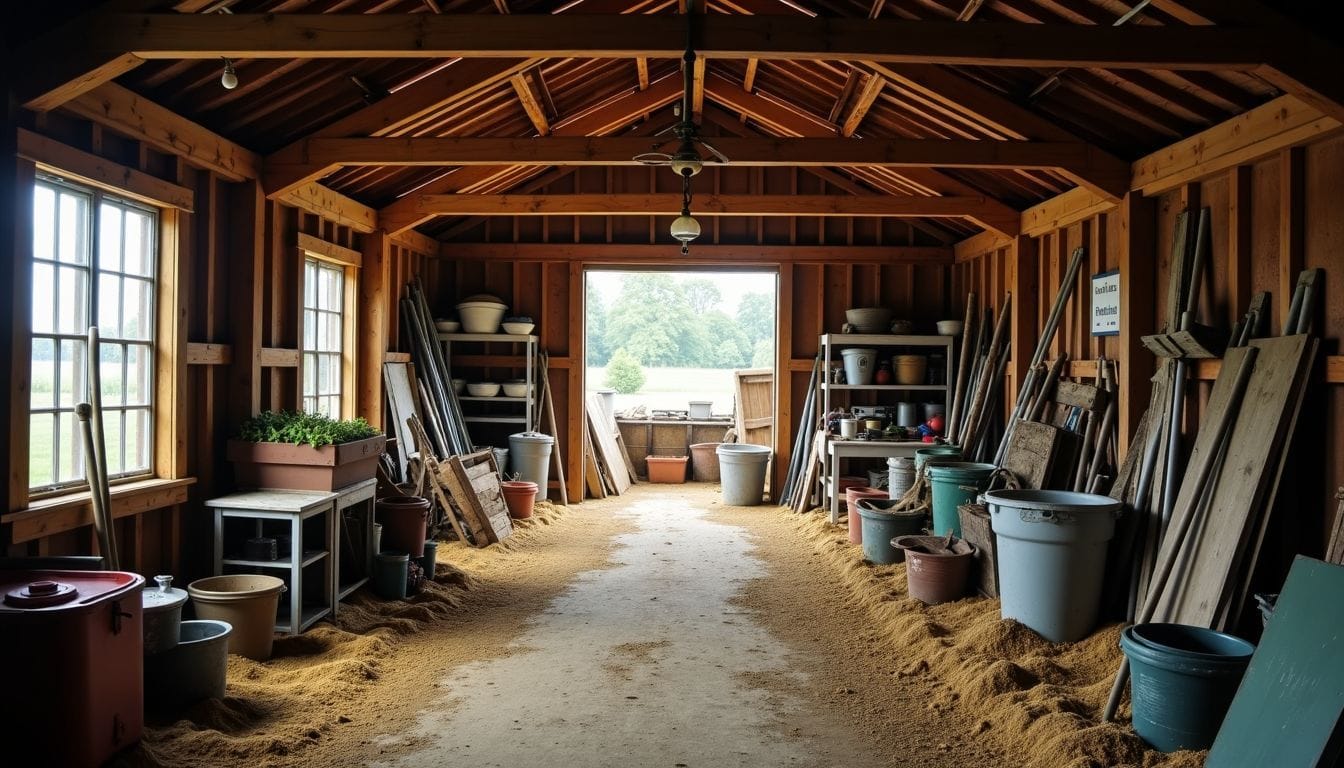
How Can Farmers Apply for R&D Tax Credits?
Applying for R&D tax credits is simple – you just need to know the steps… Want to learn more?
Application Process Overview
Asking for R&D tax credits in farming is easy. You need to fill in a form about your new ideas. This form asks about money spent on workers, stuff, and tools for R&D. You can ask for money even if your plan didn’t work.
It’s key to keep good notes of all your R&D costs.
Getting help from R&D tax pros can make things simpler. They know what the tax office wants to see. These experts can save you time and help you do well. With their aid, you might get back a lot of your R&D money.
Required Documentation and Record-Keeping
Good records are vital for R&D tax credit claims in farming. You must collect all project info, timelines, and costs. Keep clear notes on your work, snags faced, and fixes found. This helps show your R&D work to HMRC.
Your records need to prove how your work tried to fix tech snags. Add lab reports, field test data, and design plans. Also, track staff time spent on R&D tasks. Money records like bills and pay info are key too.
Good record-keeping makes claims easier and more likely to win. It’s best to team up with an R&D tax expert or book-keeper. They can help you know what to write down and how to show it to HMRC.
This team plan boosts your odds of a smooth, winning claim.

What Are Common Challenges in Claiming Agricultural R&D Tax Credits?
Farmers often struggle to spot R&D work in their daily tasks. Want to learn more about overcoming these hurdles?
Identifying Qualifying Activities
Spotting R&D activities in farming can be tricky. You need to look for projects that tackle scientific or tech puzzles. For example, creating new sensor systems for watering crops or using drones to spray pesticides count.
Testing robot weeders is also on the list. These tasks must lead to better farming methods.
Keep an eye out for work that pushes the limits of what’s known. It’s not just about using new tools – it’s about solving problems in new ways. RD Tax Credits UK can help you spot these activities in your farm work.
They know what HMRC looks for in claims.
Calculating Eligible Expenses
Calculating eligible expenses for R&D tax credits in agriculture can be tricky. You need to track all costs linked to your innovative projects. This includes staff wages, materials, and even some overheads.
Keep detailed records of every penny spent on research and development. HMRC wants to see clear proof of your spending.
RD Tax Credits UK can help you figure out which costs qualify. They know the rules inside out and can spot expenses you might miss. Their experts will guide you through the process, making sure you claim every pound you’re entitled to.
With their help, you could get back up to 33% of your R&D spend.
Compliance with HMRC Guidelines
HMRC has clear rules for R&D tax relief claims. You must follow these to avoid mistakes and get your money back. Keep good records of all your R&D work. This includes notes on problems you faced and how you fixed them.
You need to show what you knew before the project and what new things you learned. It’s key to have an expert who can spot R&D activities in your farm work. They’ll help you explain why your work counts as R&D to HMRC.
Good records make HMRC checks easier. You’ll need to prove your spending on staff, materials, and other costs. Make sure you can show how each cost links to your R&D project. This way, you’ll get the most from your claim and stay on the right side of HMRC rules.
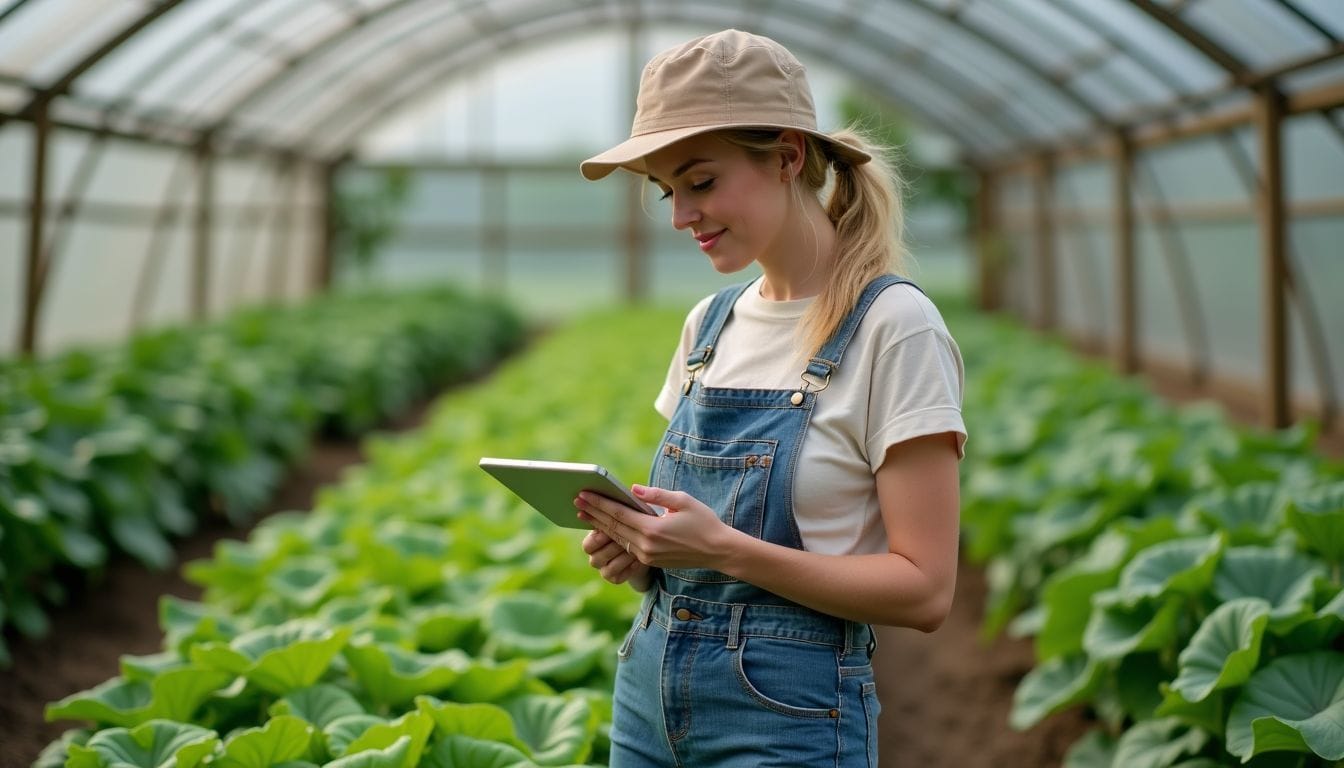
How Do R&D Tax Credits Support Sustainable Agriculture?
R&D tax credits boost eco-friendly farming. They help farmers try new ways to save water and use less chemicals.
Encouraging Eco-Friendly Farming Methods
Tax breaks help UK farmers go green. These breaks let farmers try new earth-friendly ways. They can use less water and fewer chemicals. Farmers can get money back when they test new green methods.
This makes it easier to farm in ways that are good for the earth.
Smart farming is a big trend in green farming. It uses tech to grow crops better. Farmers can get tax help when they try these clever tools. This push for green farming is good for nature and food.
It also keeps UK farms strong in the world market.
Promoting Resource Efficiency in Agriculture
Tax credits for research help farms use less stuff. These credits pay for new tools like clever watering and exact farming. You can use less water and plant food but grow more crops.
This helps you save money and look after nature.
Farmers who use these credits often do much better. Some have cut how much water they use by 30% with new tools. Others have grown 20% more crops by using data. These changes make farms earn more money and be kinder to the earth.
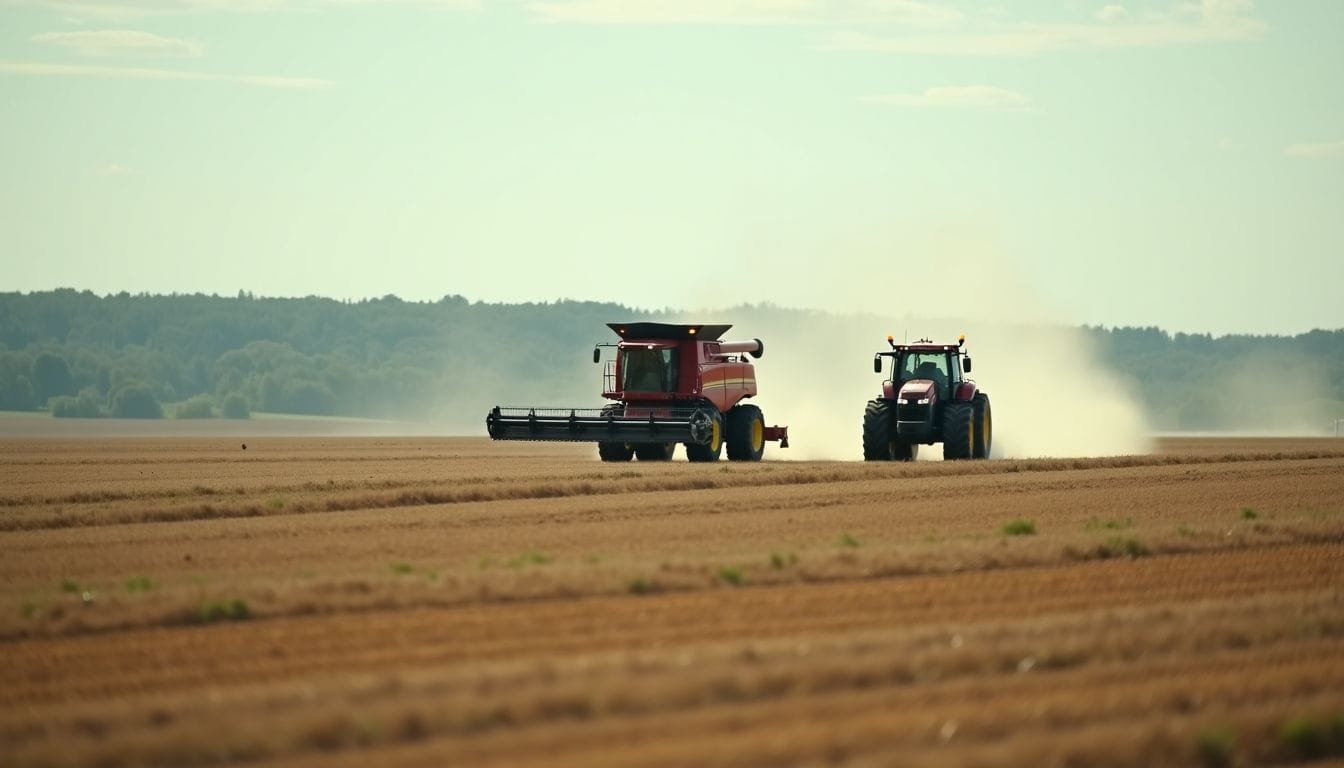
What Recent Changes Affect R&D Tax Credits in Agriculture?
Recent policy shifts have shaken up R&D tax credits in agriculture. You’ll want to stay sharp on these changes to make the most of your claims.
Policy Updates and Their Implications
R&D tax relief rules have changed since 1 April 2023. Smaller firms will see lower rates. The extra deduction has dropped to 86% from 130%. The credit rate has fallen to 10% from 14.5%.
These cuts may affect small farms’ ability to invest in new tech.
For bigger firms, there’s good news. The R&D Expenditure Credit rate has gone up to 20% from 13%. This boost could spur more research in large farm businesses. From April 2024, most companies will get a 20% credit rate.
This change aims to make the system simpler and boost R&D across all sectors.
These updates will change how UK farms approach new ideas. Smaller farms might need to rethink their R&D plans. Larger farms could find new ways to expand their research. The changes show the government wants a simpler, yet strong R&D scene in farming.
Future Trends in Agricultural R&D Incentives
Farming tax breaks are changing. New rules will likely back green farming more. Expect more help for smart farm tech like AI and robots. These tools can grow more food and save money.
The government might give bigger tax cuts for eco-friendly farming.
Smart farming is on the rise. It uses data to make farms work better. You could get extra money off your taxes for using these clever methods. Growing food up high and making meat in labs are big news too.
Putting money into these ideas might lead to more tax perks. Watch for new rules that reward new ideas in farming that’s good for the planet.

How Do R&D Tax Credits Compare to Other Agricultural Incentives?
R&D tax credits offer more flexibility than grants for farmers. You can use them for a wider range of projects and get cash back even if you’re not profitable yet.
Grants vs. Tax Credits
Farmers can get help from grants and tax credits. Grants give you money up front for certain projects. Tax credits lower your tax bill after you spend on R&D. Both can help your farm’s cash flow, but they work in different ways.
Many UK farmers miss out on R&D tax credits. Only 1% of all R&D claims come from farms. This means lots of farms are losing money they could get back. Tax credits can be more flexible than grants.
You can use them for more costs linked to new ideas.
R&D tax credits can give you cash even if you’re not making a profit yet. This helps pay for daily costs while you grow your business. Grants might have stricter rules about how you spend the money.
With tax credits, you have more freedom to invest in areas that matter most to your farm.
Complementary Support Programs for Farmers
UK farmers can get help from many support schemes along with R&D tax credits. The Farming Investment Fund gives grants for kit and tech to make farms more productive. You can ask for up to £500,000 to buy things like smart farming tools or robot milking systems.
Another big scheme is Countryside Stewardship. It pays farmers who help the environment. You might get money for planting hedges, making homes for wildlife, or cutting water pollution.
These payments can be £100 to £500 per hectare, based on what you do.
The LEADER programme helps rural firms with grants for new projects. You could get funds to open a farm shop, start a posh camping site, or set up farm tourism. Grants often cover 40% of project costs, up to £100,000.
These schemes work well with R&D tax credits to boost farm ideas and income.
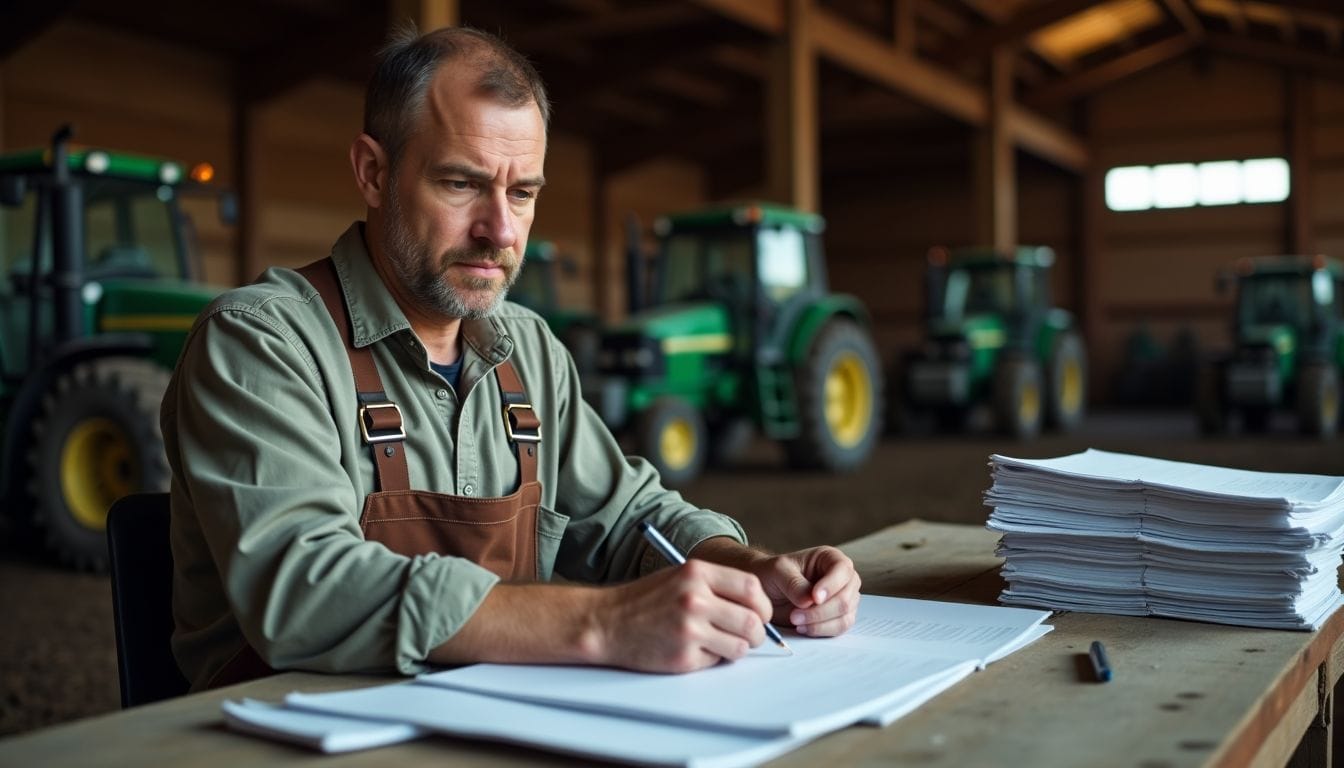 R&D tax credits boost farm innovation. You can claim for crop, livestock, and tech projects. Keep good records to support your claim. RD Tax Credits UK helps you navigate HMRC rules.
R&D tax credits boost farm innovation. You can claim for crop, livestock, and tech projects. Keep good records to support your claim. RD Tax Credits UK helps you navigate HMRC rules.
Conclusion
These credits fuel sustainable farming practices. Recent policy changes affect how you apply. Grab this chance to grow your agribusiness today.

